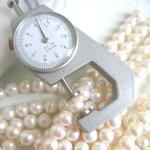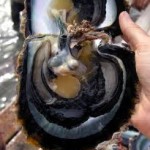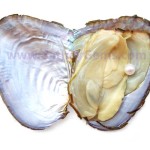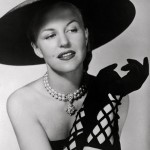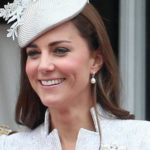If you are not that cluey about pearls and are really confused about the array and diverse varieties of pearls and pearl jewellery out there today, your best bet is finding a trader or designer that knows at bit about the world’s most beloved organic gem – the gem of the water. The Pearl!
It can be very confusing to the novice and this is why my mission is always to make everyone understand the basic differences of fresh and sea water pearls. Here’s the best tip. Usually the price ticket relates directly to the quality of the pearls or the pearl jewellery. If we are talking thousands from a reputable outlet then you can bet, you are looking at quality sea water pearls. If you look at a seller online selling pearls for under $55 then you are probably looking at something that has questionable quality and could be inferior fresh water pearls. Makes sense no?
The first to mass produce small round pearls were the Japanese Mikimoto pearls. These were small 4,5, to 7 mm, quickly developed cultured pearls, with tiny nuclei. Funnily the 89 year old Mikimoto imported the mother of pearl seeds needed to cultivate these pearls from America – the Mississippi River where it passes Iowa. Not much natural nacre developed on the outer surface of these small pearls but the sales for these pearls were more popular than any export Japan had to offer. We can almost say it saved a nation! Most of these necklaces were not knotted (saved time and money and kept the necklaces inexpensive from USD20 -130) and were graduated with a few larger ones at the center. They were the first company to offer pearls to the general public and became popular post war especially with the surge of American soldiers present in the South Pacific who had their pay to spend on their Mums or girlfriends back home. This then, began the shift of the pearl, being accessible to, not just royalty, gentry and the extremely wealthy but for the newly growing middle classes, who thrived post WWII.
Australian’s White South Sea Pearl and the Black Tahitian Pearls are both salt water pearls and the world’s most desirable organic gems. The golden Pearl of the Indonesian waters are also Pearls to treasure and behold, but not often do you see a baroque gold pearl. Baroque is the look of a naturally formed pearl that are not perfect spheres. Usually the most expensive pearls are fully developed round pearls with no imperfections. Good luck finding any and the average person could most definitely not afford to buy one. There is a very special market for natural baroque pearls or drop pearls that have a history like the pearl worn by Mary of Scots and then later acquired by Elizabeth Taylor the peregrina.
I have mentioned previously in my blog that usually the colour of the sand of the area where the pearls are cultivated, directly influences the outcome of the colour of their grown pearl. Shape is also a thought here and many of the world’s loveliest Keshi’s come from Indonesia. There is also the cave amoeba pearls which I just love but this article will be never ending if I mention every shape and variety of pearl.
Most South Sea Pearls are from 9 mm up averaging at about 14 mm but it’s the freshwater pearl that I love and work with daily. These too come in larger sizes around 12 mm, of late and are increasing all the time, as the fresh-water pearl farmers learn more about their crops and leave the pearls to rest longer, than was usually the case. This then of course must see a rise in the price of the freshwater pearl. The Chinese have dominated the world’s freshwater pearl industry and therefore have mass produced pearls, leaving we older more established Labels scrambling to find good quality stock, as many of the good pearls today have been bought up by other larger retail stores.
Although the sea pearl fetches the highest price, it is what you can do with a freshwater pearl that made me fall in-love with this genus. Fresh or sweet water Pearls have much more layers of nacre than the sea pearl and to me you get much more value for money for a freshwater pearl.
Enter – Julleen – a small label but has always offered our customers, the very finest quality for the price bracket. At the end of the day I like to think of servicing people who really want an original piece of pearl jewellery that is affordable.
Julleen Pearl Jewellery Designs was born from a lust of all things pearl. Love of pearls is not new. Women have been imprisoned for the desire to possess pearls. Men have hanged by the neck for stealing them and drowned at sea by risking their lives to find them. Rulers of kingdoms have sacrificed much, all for the love of pearls.
My gift luckily, is that I can visualize a design in my head and then go about making it and so for me, after finding the right pearl, the design grows and becomes one of the most important aspects of my label Julleen. Therefore design has value and the use of only organic gems and metals is hugely important.
Also luckily I know a good pearl when I see it and for over a decade now I have used my experience, to make interesting and very different jewellery designs. This is why my designs are in a middle ground pricing. You can see my pieces are hand-made but I try to make each model look like it came from the best jewellery makers anywhere.
People need to choose the right dealer and someone who knows the business. Hopefully with my blog some of you have become aware of the differences between the quick turnover pearl jewellery that breaks or the pearl jewellery that I make where the quality of the pearl I use and design around, ensures the pieces last, for a life time.
What ever the design. I am sure that many of you know you are getting genuine pearls with the Julleen brand and that the added bonus is, all Julleen Pearl Jewellery is guaranteed permanently. Having a clue is important – when talking about pearls.


